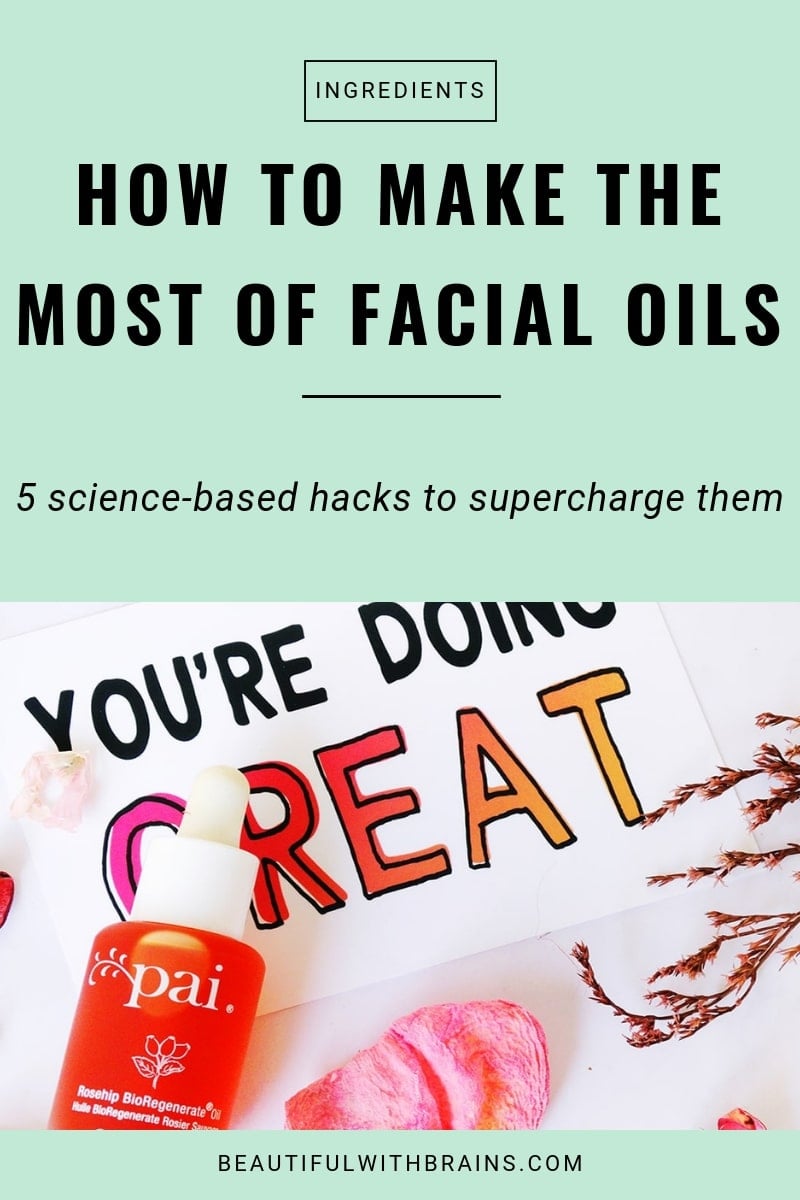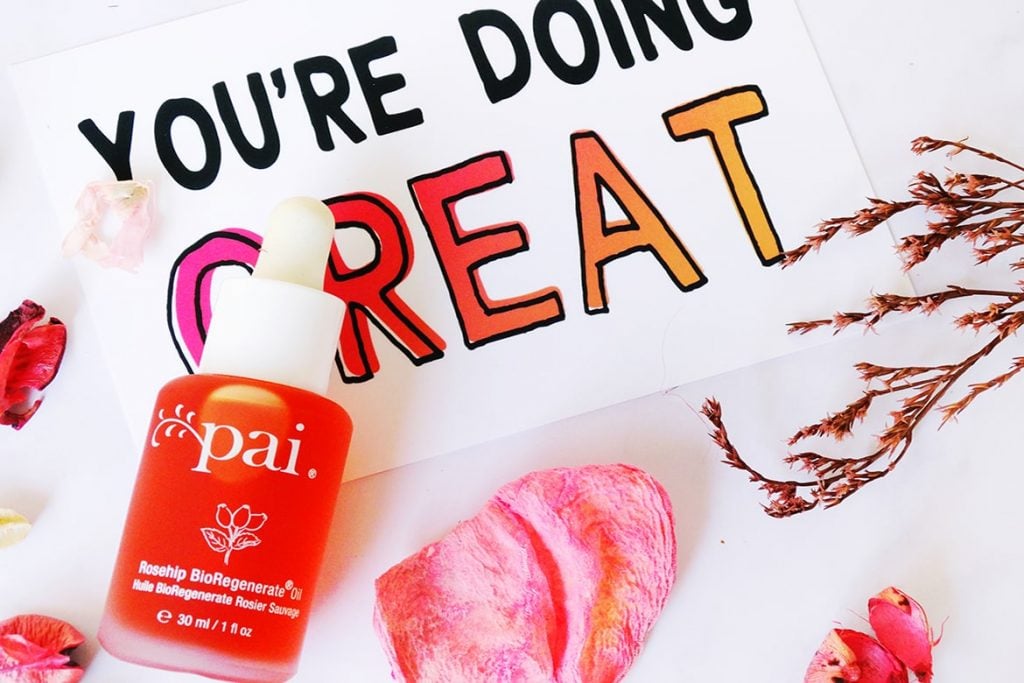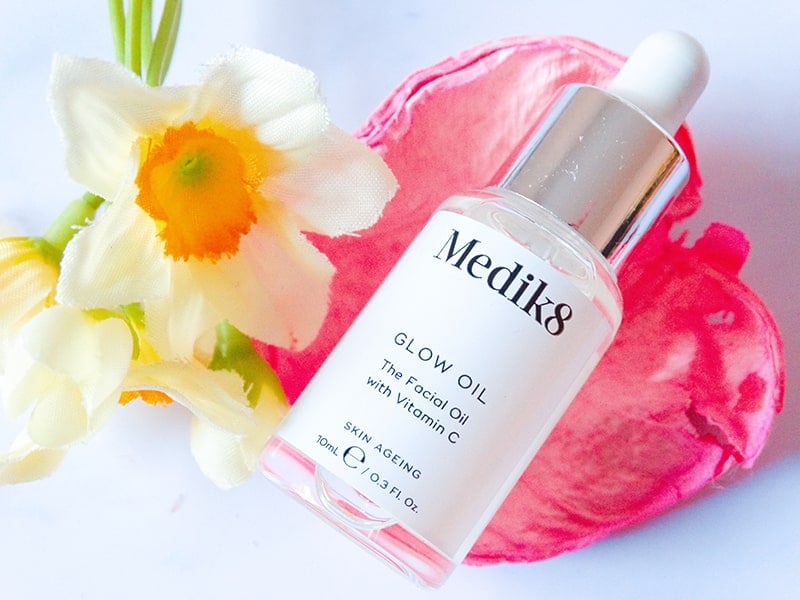
In winter, my skincare routine is taken over by facial oils.
They melt away makeup and impurities without drying out my skin. Turn up the hydration level a notch or two. Seal in moisture so the cold winds can’t steal it all away.
My skin would be a dry, flaky mess without them. I’m sure a lot of you can relate. 🙂
But not all oils will do. Some oils just don’t agree with your skin type, turn your face into a battlefield or simply irritate it.
You need to choose wisely. And once you find that gem that makes your skin glow, make the most of it. Here’s how:
1. Choose Wisely
Not all oils are created equal. As a rule, the higher the saturated fat content of the oil, the heavier the oil feels.
Dry skin likes oils rich in saturated fatty acids, like lauric, linoleic, linolenic and oleic acids. You can find them in coconut, argan and palm oils.
These oils are wonderful for dry skin because they increase the amount of water skin can hold and trap it in so it can’t escape.
Oils less rich in saturated fats – think olive, sweet almond and apricot – instead, only trap moisture into the skin. If your skin is dry and doesn’t have enough moisture to begin with, these oils won’t help much.
If you decide to go with one of them, make sure to use a water-based moisturiser or hyaluronic acid serum first to add plenty of moisture to your skin.
Oily skin doesn’t need oils. But if you’d like to make your skincare routine more natural, go with a lightweight oil that can balance sebum’s production and keep pimples at bay. The best ones are jojoba, rosehip and tea tree oils.
Related: What Are The Best Facial Oils For Oily Skin?

2. Avoid Fragrant Oils
There’s a reason why I don’t use (and like) a lot of natural skincare: it’s loaded with fragrant oils.
I get it. Natural skincare products usually smell like crap. If you don’t add a fragrance, they won’t sell. And what could smell more delicious than a bouquet of oranges and lemons?
Truth bomb: if an oil smells too good, it’s bad news for skin.
Fragrant oils contain compounds that can cause irritations and make your skin prone to sun damage. Citrus oils are some of the biggest culprits but they’re by no means they only ones.
If you see any of these oils on the label, run away:
- All citrus oils
- Eucalyptus oil
- Geranium oil
- Jasmine oil
- Lavender oil
- Peppermint oil
- Rose oil
- Rosemary oil
- Sandalwood oil
- Ylang ylang oil
Related: 7 Natural Ingredients That Can Irritate Skin
Struggling to put together a skincare routine that banishes dryness and makes your skin supple and dewy? Download your FREE “Best Skincare Routine For Dry Skin” to get started (it features product recommendations + right application order):
3. Use Only A Few Drops
When you slather on moisturiser, you usually use the size of a quarter. That’s how much cream you need to cover the whole face.
So it makes sense to do the same with facial oils, right?
Yes… if you want to look like a frying pan riddled with pimples… Not the look you’re going for, is it?
With facial oils, less is more. Depending on your skin type, you only need between three to six drops. More than that and your skin’ll end up in trouble.
Related: Are You Applying The Right Amount Of Each Skincare Product?

4. Apply On Damp Skin
The best time to apply oils is after a shower, when your skin is still damp.
That’s because oils are great at sealing moisture into the skin. After a shower, your skin is full of moisture. If you don’t seal it in pronto, some of it may evaporate out of your skin.
If, like me, you use facial oils only at night, you may want to start showering right before going to bed. It may be weird at first but you’ll save some precious time in the morning. Win win.
5. Store Them Properly
Facials oils oxidise (i.e. go bad) when exposed to light and air.
You don’t want to splurge $60 on a facial oil only to see it become useless before you can use it all up.
Don’t let your facial oils go to waste. Store them in a cool, dry place away from light and heat. They’ll last you a lot longer.
The Bottom Line
Facial oils are great moisturisers for winter time. The key is choosing the right one for your skin type and have a good application technique that maximises results.


I was wondering what’s the difference between Rose Oil vs Rosehip Oil? I thought it’s the same? I love rosehip oils but on your chart of “Bad oils” says rose oil is not good?
Alan, rose oil is extracted from the petals of the rose and contain substances that can be irritating. Rosehip oil comes from the hips of roses and is an antiaging and moisturising powerhouse.
Certain essential oils (Like Citrus family oils), but not all of them including many of those abovementioned, cause photosensitization or can irritate the skin.
What is wrong with those you mentioned?
Thank you.
Mehrzad, the fragrant components that make them smell good are often irritating for skin, especially if it’s sensitive.
I absolutely love your advice, thank you so much!
Just a question on combining retinol and rosehip oil. I’d want to apply retinol then rosehip oil slightly after as my PM routine, would this be ok or should I wait before applying the oil?
Lucy, you can apply it straight away.
my research directed me to Marula oil (mature dry skin) and read that it should be added over the moisturizer, after said moisturizer has ‘sunk’ in…But I don’t see it mentioned in your list…? What say you?
thnx-